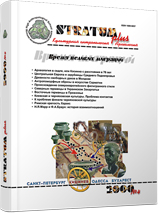Антропоморфные образы в искусстве ираноязычных народов Сарматии II-I вв. до н.э.
The Antropomorphical Images in the Art of the Iranian-speaking Peoples of Sarmatia in the II-I cc. BC
Author(s): Sergey A. YatsenkoSubject(s): History, Archaeology, Cultural history, Ancient World
Published by: Издательский дом Stratum, Университет «Высшая антропологическая школа»
Summary/Abstract: Middle II – I cc. BC was the period for settlement of a group of large Sarmatian tribes over European steppes and for development of their culture. Anthropomorphic images of that time are studied by subjects and their versions, types of articles and their supposed belonging to the ethnic groups known from written records. The Sarmatians of that period, sometimes deliberately would pick local or imported (from Bosphorus, Bactria or Parphia) images for their interments, to represent their gods or legendary heroes. The list of classic prototypes is limited: Aphrodite, Apollo or Helios, seldom – Dionysos, Nike and Tyhe. It does not at all correspond to similar list with their ancestors Scythians of V – early III c. BC. New proper Sarmatian subjects: racing and standing still horse-riders with original iconography, supposed epic images (a duel of two heroes or of a hero with a monster), small idols of numerous forms and “master of animals”. Images of humans and gods were made on mainly bridle breast junctions, fibulae-brooches, buckles and small idols. Analysis of “barbarian” articles revealed a large variety in representing human figures connected with local peculiarities and individual master’s style. Most of these anthropomorphic images are found with such tribes as Siracs, Tauro-Scythians and “Upper” Aorses. “Barbarian” articles were apparently produced, first of all, in Sirakena, Scythia Minor and in Bosphorus kingdom. Also, the list of Greed gods and barbarian subjects with the tribes of Middle Sarmatian and Late Sarmatian cultures (early I – late IV cc. AD) practically does not comply with the evidence of the studied period.
Journal: Stratum plus. Археология и культурная антропология
- Issue Year: 2000
- Issue No: 4
- Page Range: 251-272
- Page Count: 22
- Language: Russian
- Content File-PDF

